shiro 的全新控制怎么动态
Posted
tags:
篇首语:本文由小常识网(cha138.com)小编为大家整理,主要介绍了shiro 的全新控制怎么动态相关的知识,希望对你有一定的参考价值。
html] view plain copypackage com.silvery.security.shiro.service.impl;
import java.text.MessageFormat;
import java.util.HashMap;
import java.util.HashSet;
import java.util.List;
import java.util.Map;
import java.util.Set;
import org.apache.shiro.cache.Cache;
import org.springframework.beans.factory.annotation.Autowired;
import com.silvery.project.cms.model.Authority;
import com.silvery.project.cms.model.Permission;
import com.silvery.project.cms.service.PermissionService;
import com.silvery.project.cms.vo.PermissionVo;
import com.silvery.security.shiro.cache.SimpleMapCache;
import com.silvery.security.shiro.cache.extend.SimpleCacheManager;
import com.silvery.security.variable.Const;
/**
*
* 加载第三方角色资源配置服务类
*
* @author shadow
*
*/
public class SimpleFilterChainDefinitionsService extends AbstractFilterChainDefinitionsService
@Autowired
private SimpleCacheManager simpleCacheManager;
@Autowired
private PermissionService permissionService;
@Override
public Map<String, String> initOtherPermission()
return converResultMap(initOperation());
@SuppressWarnings("unchecked")
private Map<Object, Object> initOperation()
Map<Object, Object> resultMap = new HashMap<Object, Object>();
// 加载数据库所有资源
PermissionVo vo = new PermissionVo();
List<Permission> permissions = (List<Permission>) permissionService.query(vo).getValue();
List<Authority> authorities = null;
for (Permission permission : permissions)
// 遍历查询当前资源的配置角色
vo.setId(permission.getId());
authorities = (List<Authority>) permissionService.query4authority(vo).getValue();
// 组装角色集合
Set<String> authoritySet = getPermissionSet(authorities);
if (authoritySet.isEmpty())
continue;
if (permission.getType() == 1)
// 请求路径资源处理
resultMap.put(permission.getContent(), MessageFormat.format(SHIRO_AUTHORITY_FORMAT, authoritySet));
else
// 元素资源处理
Map<Object, Object> map = new HashMap<Object, Object>(1);
map.put(Const.OTHER_PERMISSSION_CACHE_NAME, authoritySet);
Cache<Object, Object> cache = new SimpleMapCache(Const.OTHER_PERMISSSION_CACHE_NAME, map);
simpleCacheManager.createCache(Const.OTHER_PERMISSSION_CACHE_NAME + "_" + permission.getId(), cache);
return resultMap;
/** 获取角色名称集合 */
private Set<String> getPermissionSet(List<Authority> authorities)
Set<String> authoritieSet = new HashSet<String>(authorities.size());
for (Authority authority : authorities)
authoritieSet.add(authority.getContent());
return authoritieSet;
/** 泛型Object转换String */
private Map<String, String> converResultMap(Map<Object, Object> map)
Map<String, String> resultMap = new HashMap<String, String>(map.size());
for (Map.Entry<Object, Object> entry : map.entrySet())
resultMap.put(entry.getKey().toString(), entry.getValue().toString());
return resultMap;
1. 加载所有资源,包括请求URL,元素节点等数据,我这里为了演示,没有分那么细就只有两种
2. 请求URL的直接放到框架中,形式如/user/list.do*=role[root,user],跟我们shiro.xml配置的一样
3. 元素节点则相应放到以键值对的形式放到缓存,以节点的编号组合成key保证可以找到这个缓存对,值是相应的角色集合
我们的缓存就存在各个资源所需要的角色集合, 加载数据步骤已经完毕了下面看看我们是怎么应用的
首先我是使用springMVC+freemarker作为展现层,具体怎么配置整合我也不说,百度一堆,直接看我帖代码说明
[html] view plain copy
<!DOCTYPE html PUBLIC "-//W3C//DTD XHTML 1.0 Strict//EN" "http://www.w3.org/TR/xhtml1/DTD/xhtml1-strict.dtd">
<html xmlns="http://www.w3.org/1999/xhtml">
<head>
<meta http-equiv="Content-Type" content="text/html; charset=utf-8" />
<title>欢迎主页</title>
</head>
<body>
$username!"游客", 欢迎您的访问! <br />
<hr />
可选操作:
<#if username??>
<@sec id="2" body="<a href='/cms/user/page.do'>用户列表</a> " /><a href="/cms/authority/page.do">权限列表</a> <a href="/cms/permission/page.do">资源列表</a> <a href="/cms/logout.do">注销退出</a>
<#else>
<a href="#" onclick="top.location.href='/cms/logout.do';">前往登录</a>
</#if>
<hr />
</body>
</html>
很明显看到我的页面有一个@sec的标签,然后有两个参数,一个id,一个是body,至于id则是你资源的编号,body是需要元素节点内容
然后我们怎么通过这个标签来判定是否在页面渲染body的节点内容呢?
下面我们看看这个@sec的实现
[html] view plain copy
package com.silvery.core.freemarker;
import java.io.IOException;
import java.util.Map;
import java.util.Set;
import org.apache.shiro.SecurityUtils;
import org.apache.shiro.cache.Cache;
import org.apache.shiro.subject.Subject;
import org.springframework.beans.factory.annotation.Autowired;
import com.silvery.security.shiro.cache.extend.SimpleCacheManager;
import com.silvery.security.variable.Const;
import freemarker.core.Environment;
import freemarker.template.TemplateDirectiveBody;
import freemarker.template.TemplateDirectiveModel;
import freemarker.template.TemplateException;
import freemarker.template.TemplateModel;
/**
*
* FreeMarker自定义标签,节点权限控制
*
* @author shadow
*
*/
public class SecurityTag implements TemplateDirectiveModel
@Autowired
private SimpleCacheManager simpleCacheManager;
@SuppressWarnings("unchecked")
public void execute(Environment env, Map params, TemplateModel[] loopVars, TemplateDirectiveBody directiveBody)
throws TemplateException, IOException
Object id = params.get("id");
Object body = params.get("body");
validate(id, body);
if (hasRole(id))
env.getOut().write(body.toString());
else
env.getOut().write("");
private void validate(Object id, Object body) throws TemplateException
if (id == null || id.toString().trim().equals(""))
throw new TemplateException("参数[id]不能为空", null);
if (body == null)
throw new TemplateException("参数[body]不能为空", null);
@SuppressWarnings("unchecked")
private boolean hasRole(Object id)
Cache<Object, Object> cache = simpleCacheManager.getCache(Const.OTHER_PERMISSSION_CACHE_NAME + "_" + id);
if (cache == null)
return false;
else
Object obj = cache.get(Const.OTHER_PERMISSSION_CACHE_NAME);
if (obj == null)
return false;
Set<String> authoritySet = (Set<String>) obj;
Subject subject = SecurityUtils.getSubject();
for (String authority : authoritySet)
if (subject.hasRole(authority))
return true;
return false;
很清晰地看到,我们是用到之前的那个资源角色缓存,通过判定缓存中存在的角色与当前shiro认证用户拥有的角色匹配,如存在任意相同角色则渲染相应节点
如Subject拥有角色[root,user],而x编号资源拥有[user,test]角色,很明显有交集会认证通过,反之则直接渲染空字符
大概流程就是这样,有的人可能会问,如何配置这个tag实现类呢?我帖下spring-mvc.xml的freemarker配置
[html] view plain copy
<!-- FreeMarker配置 -->
<bean id="freemarkerConfig"
class="org.springframework.web.servlet.view.freemarker.FreeMarkerConfigurer">
<property name="templateLoaderPath" value="/WEB-INF/ftl/" />
<property name="defaultEncoding" value="UTF-8" />
<property name="freemarkerVariables">
<map>
<entry key="sec">
<bean class="com.silvery.core.freemarker.SecurityTag">
</bean>
</entry>
</map>
</property>
<property name="freemarkerSettings">
<props>
<prop key="template_update_delay">10</prop>
<prop key="locale">zh_CN</prop>
<prop key="datetime_format">yyyy-MM-dd HH:mm:ss</prop>
<prop key="date_format">yyyy-MM-dd</prop>
<prop key="number_format">#.####</prop>
</props>
</property>
</bean>
相信懂freemarker的人都能看明白,我也不累赘说明;最后再说一句,谢谢大家支持. 参考技术A
推荐一套完整的Shiro Demo,免费的。
Shiro介绍文档:http://www.sojson.com/shiroDemo已经部署到线上,ShiroDemo:http://shiro.itboy.net
管理员帐号:admin,密码:sojson.com 如果密码错误,请用sojson。PS:你可以注册自己的帐号,然后用管理员赋权限给你自己的帐号,但是,每20分钟会把数据初始化一次。建议自己下载源码,让Demo跑起来,然后跑的更快。
shiro动态控制url资源
怎么利用shiro权限动态控制每个url资源呢?主要包括jsp(html)页面、action的url访问,而静态资源和登录资源则可直接访问。
所谓动态控制url就是url的权限控制不是手动写死在配置文件中,而是根据数据库的变化而变化。
表结构:
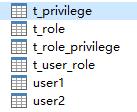
user2:用户表
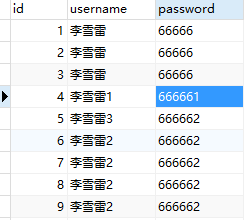
t_role:角色表

t_user_role:用户角色表

t_privilege:权限资源表
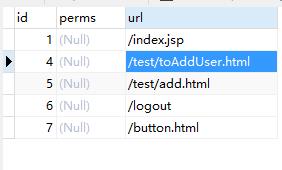
t_role_privilege:角色权限资源表
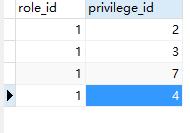
shiro动态控制url资源:
applicationContext-shiro.xml配置chainDefinitionSectionMetaSource:
<?xml version="1.0" encoding="UTF-8"?> <beans xmlns="http://www.springframework.org/schema/beans" xmlns:util="http://www.springframework.org/schema/util" xmlns:xsi="http://www.w3.org/2001/XMLSchema-instance" xmlns:p="http://www.springframework.org/schema/p" xsi:schemaLocation=" http://www.springframework.org/schema/beans http://www.springframework.org/schema/beans/spring-beans.xsd http://www.springframework.org/schema/util http://www.springframework.org/schema/util/spring-util.xsd"> <description>apache shiro配置</description> <bean id="chainDefinitionSectionMetaSource" class="com.test.www.web.filter.ChainDefinitionSectionMetaSource"> <property name="filterChainDefinitions"> <value> <!-- 静态资源允许访问 --> <!-- /** = anon --> <!-- /app/** = anon /assets/** = anon --> <!-- 登录页允许访问 --> <!-- /user/login.htm = anon --> <!-- /login.jsp = anon --> <!-- /*.jsp = anon --> <!-- /js/**=anon --> <!-- 登录页面 --> /index2.jsp = anon /js/** = anon /css/** = anon /images/** = anon /assets/** = anon /test/loginAdmin.html=anon /logout=logout <!-- 这才是对退出的配置 --> <!-- /test/add.html = perms["user:add"] --> <!-- /test/add.html = perms["/test/add.html"] --> <!-- 其他资源需要认证 --> <!-- /** = authc --> <!-- /logout=logout --> <!-- 这才是对退出的配置,不能放在/** = authc的后面 --> </value> </property> </bean> <bean id="shiroFilter" class="org.apache.shiro.spring.web.ShiroFilterFactoryBean"> <property name="filters"> <map> <entry key="logout" value-ref="logoutFilter"/> </map> </property> <property name="securityManager" ref="securityManager"/> <!-- <property name="loginUrl" value="/index2.jsp"/> <property name="successUrl" value="/main/main.htm"/> <property name="unauthorizedUrl" value="/page/401.htm"/> --> <!-- shiro判断是否登录,没有登录则跳转到登录页面,loginUrl对应登录页面的路径 --> <property name="loginUrl" value="/index2.jsp"/> <property name="unauthorizedUrl" value="/page/401.htm"/><!-- /page/401.htm --> <property name="filterChainDefinitionMap" ref="chainDefinitionSectionMetaSource" /> </bean> <!-- 缓存管理器 使用Ehcache实现 --> <!-- <bean id="shiroEhcacheManager" class="org.apache.shiro.cache.ehcache.EhCacheManager" p:cacheManagerConfigFile="/WEB-INF/conf/ehcache-shiro.xml"> </bean> --> <!-- 会话DAO --> <bean id="sessionDAO" class="org.apache.shiro.session.mgt.eis.MemorySessionDAO"/> <!-- 会话管理器 --> <bean id="sessionManager" class="org.apache.shiro.web.session.mgt.DefaultWebSessionManager"> <property name="sessionDAO" ref="sessionDAO"/> </bean> <!-- 安全管理器 --> <bean id="securityManager" class="org.apache.shiro.web.mgt.DefaultWebSecurityManager"> <property name="realms"> <list> <ref bean="securityRealm"/> </list> </property> <!-- cacheManager,集合spring缓存工厂 --> <!-- <property name="cacheManager" ref="shiroEhcacheManager" /> <property name="sessionManager" ref="sessionManager" /> --> </bean> <!-- Shiro生命周期处理器 --> <bean id="lifecycleBeanPostProcessor" class="org.apache.shiro.spring.LifecycleBeanPostProcessor"/> </beans>
ChainDefinitionSectionMetaSource.java:
package com.test.www.web.filter; import java.text.MessageFormat; import java.util.List; import javax.annotation.Resource; import org.apache.commons.lang3.StringUtils; import org.apache.shiro.config.Ini; import org.apache.shiro.config.Ini.Section; import org.springframework.beans.factory.FactoryBean; import com.test.www.web.entity.user.TPrivilege; import com.test.www.web.service.user.TPrivilegeService; public class ChainDefinitionSectionMetaSource implements FactoryBean<Ini.Section>{ public static final String PREMISSION_STRING="perms[\\"{0}\\"]"; private String filterChainDefinitions; /*private PrivilegeDao privilegeDao; public PrivilegeDao getPrivilegeDao() { return privilegeDao; }*/ @Resource private TPrivilegeService tPrivilegeService; public String getFilterChainDefinitions() { return filterChainDefinitions; } @Resource public void setFilterChainDefinitions(String filterChainDefinitions) { String fiter="";//改正后的url配置 /*List<Privilege> list = privilegeDao.getAll(); for (Iterator<Privilege> it = list.iterator(); it.hasNext();) { Privilege privilege = it.next(); if(!StringUtils.isEmpty(privilege.getUrl())) { fiter+="/"+privilege.getUrl()+" = authc," +MessageFormat.format(PREMISSION_STRING,privilege.getPerms()) +"\\n"; }//追加beans.xml中已经有的过滤 }*/ List<TPrivilege> tPrivilegeList = tPrivilegeService.selectAllPrivileges(); if(tPrivilegeList!=null && tPrivilegeList.size()>0){ for (TPrivilege tPrivilege : tPrivilegeList) { if(!StringUtils.isEmpty(tPrivilege.getUrl())) { fiter += tPrivilege.getUrl()+" = authc," +MessageFormat.format(PREMISSION_STRING,tPrivilege.getUrl()) +"\\n"; }//追加beans.xml中已经有的过滤 } } //对url拦截 fiter += "/**"+" = authc" +"\\n"; //fiter+="/test/add.html"+" = authc," +MessageFormat.format(PREMISSION_STRING,"/test/add.html") +"\\n"; //fiter+="/js/**"+" = authc," +MessageFormat.format(PREMISSION_STRING,"/js/**") +"\\n"; //fiter+="/js/**"+" = " +MessageFormat.format(PREMISSION_STRING,"/js/**") +"\\n"; System.out.println(filterChainDefinitions+fiter); this.filterChainDefinitions = filterChainDefinitions+fiter; } /*@Resource public void setPrivilegeDao(PrivilegeDao privilegeDao) { this.privilegeDao = privilegeDao; }*/ public Section getObject(){ Ini ini = new Ini();//网上好多都是在这里配置URL的。但是发现是错误的。 ini.load(filterChainDefinitions); Ini.Section section = ini.getSection(Ini.DEFAULT_SECTION_NAME); return section; } public Class<?> getObjectType() { return this.getClass(); } public boolean isSingleton() { return false; } }
服务器启动的时候会执行ChainDefinitionSectionMetaSource类,加载系统权限资源表所有的url到filterChainDefinitions中(在filterChainDefinitions后追加),从而实现对所有url资源的权限控制的配置:
这个类就是用来在filterChainDefinitions中追加url资源权限控制的。
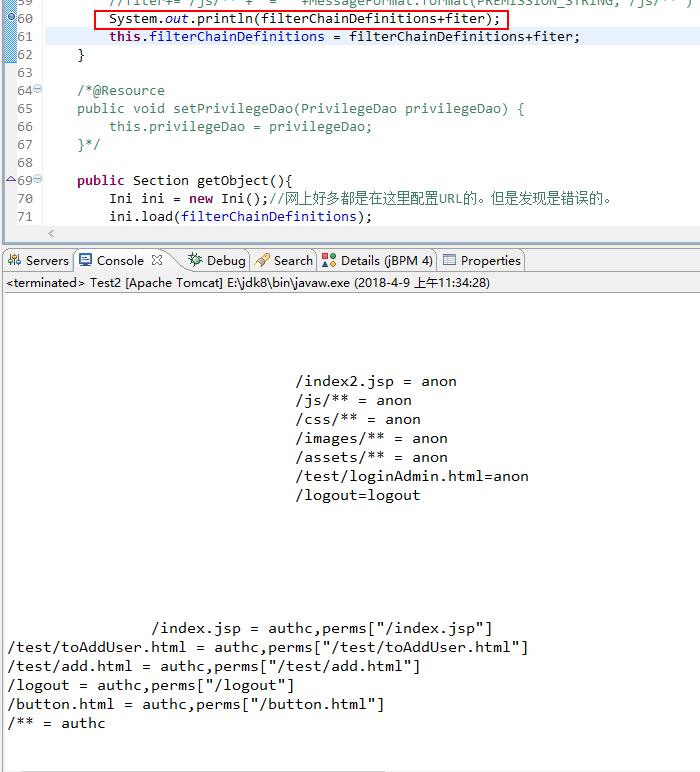
注意:
/** = authc应放在最后,否则会影响追加的权限资源的控制。
当访问资源的时候,例如/test/toAddUser.html,就会进入shiro授权方法中进行权限校验,如果没有权限则进入到401未授权,否则正常访问。
SecurityRealm.java:
package com.test.www.web.security; import java.util.List; import javax.annotation.Resource; import org.apache.shiro.SecurityUtils; import org.apache.shiro.authc.AuthenticationException; import org.apache.shiro.authc.AuthenticationInfo; import org.apache.shiro.authc.AuthenticationToken; import org.apache.shiro.authc.SimpleAuthenticationInfo; import org.apache.shiro.authc.UsernamePasswordToken; import org.apache.shiro.authz.AuthorizationInfo; import org.apache.shiro.authz.SimpleAuthorizationInfo; import org.apache.shiro.realm.AuthorizingRealm; import org.apache.shiro.subject.PrincipalCollection; import org.apache.shiro.subject.Subject; import org.springframework.stereotype.Component; import com.test.www.web.entity.user.TRolePrivilegeKey; import com.test.www.web.entity.user.TUserRoleKey; import com.test.www.web.entity.user.User; import com.test.www.web.service.user.TRolePrivilegeService; import com.test.www.web.service.user.TUserRoleService; import com.test.www.web.service.user.UserService; /** * 用户身份验证,授权 Realm 组件 * **/ @Component(value = "securityRealm") public class SecurityRealm extends AuthorizingRealm { @Resource private UserService userService; @Resource private TUserRoleService tUserRoleService; @Resource private TRolePrivilegeService tRolePrivilegeService; /** * 权限检查 */ @Override protected AuthorizationInfo doGetAuthorizationInfo(PrincipalCollection principals) { /*SimpleAuthorizationInfo authorizationInfo = new SimpleAuthorizationInfo(); String username = String.valueOf(principals.getPrimaryPrincipal()); System.out.println("ssssssss");*/ String username = principals.getPrimaryPrincipal().toString() ; System.out.println(username); Subject subject = SecurityUtils.getSubject(); User user = (User)subject.getPrincipal(); SimpleAuthorizationInfo authorizationInfo = new SimpleAuthorizationInfo() ; /*Set<String> roleName = t_userService.findRoles(username) ; Set<String> permissions = t_userService.findPermissions(username) ;*/ //final List<Role> roleInfos = roleService.selectRolesByUserId(user.getUserId()); /*for (Role role : roleInfos) { // 添加角色 System.err.println(role); authorizationInfo.addRole(role.getRoleSign()); final List<Permission> permissions = permissionService.selectPermissionsByRoleId(role.getRoleId()); for (Permission permission : permissions) { // 添加权限 System.err.println(permission); authorizationInfo.addStringPermission(permission.getPermissionSign()); } }*/ List<TUserRoleKey> tUserRoleKeyList = tUserRoleService.selectRolesByUserId(user.getId()); if(tUserRoleKeyList != null && tUserRoleKeyList.size()>0){ for(TUserRoleKey tUserRoleKey : tUserRoleKeyList){ authorizationInfo.addRole(tUserRoleKey.getCode()); List<TRolePrivilegeKey> tRolePrivilegeKeyList = tRolePrivilegeService.selectPrivilegesByRoleId(tUserRoleKey.getRoleId()); for(TRolePrivilegeKey tRolePrivilegeKey : tRolePrivilegeKeyList){ authorizationInfo.addStringPermission(tRolePrivilegeKey.getUrl()); } } } //Set<String> roleName = new HashSet<String>(); //Set<String> permissions = new HashSet<String>(); //查询角色 //roleName.add("admin"); //根据角色查询权限 //permissions.add("/test/add.html1"); //pub:coursecategory user:add //permissions.add("/js/**"); //permissions.add("/jsp"); //authorizationInfo.setRoles(roleName); //authorizationInfo.setStringPermissions(permissions); return authorizationInfo; } /** * 登录验证 */ @Override protected AuthenticationInfo doGetAuthenticationInfo(AuthenticationToken token) throws AuthenticationException { /* String username = String.valueOf(token.getPrincipal()); String password = new String((char[]) token.getCredentials()); System.out.println("aaaaaaa"); SimpleAuthenticationInfo authenticationInfo = new SimpleAuthenticationInfo(username, password, getName());*/ //int i = 1/0; //获取用户账号 //验证账号密码 UsernamePasswordToken userToken = (UsernamePasswordToken) token; System.out.println("1:"+userToken.getUsername()); User user = userService.getUserByUserName(userToken.getUsername()); System.out.println("2"); if (user != null){ //将查询到的用户账号和密码存放到 authenticationInfo用于后面的权限判断。第三个参数传入realmName。 AuthenticationInfo authenticationInfo = new SimpleAuthenticationInfo(user,user.getPassword(),this.getClass().getSimpleName()) ; return authenticationInfo ; }else{ return null ; } } }
至此,shiro动态控制url权限资源已完成。
说明:
url资源(action、静态html或动态页面jsp的url)保存在数据库中。
以上是关于shiro 的全新控制怎么动态的主要内容,如果未能解决你的问题,请参考以下文章